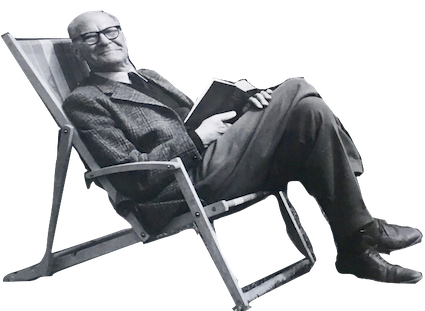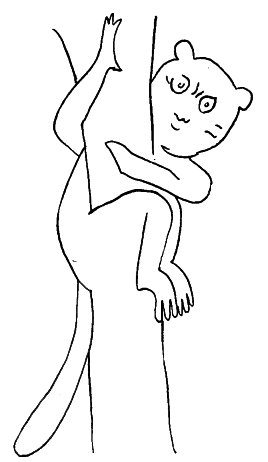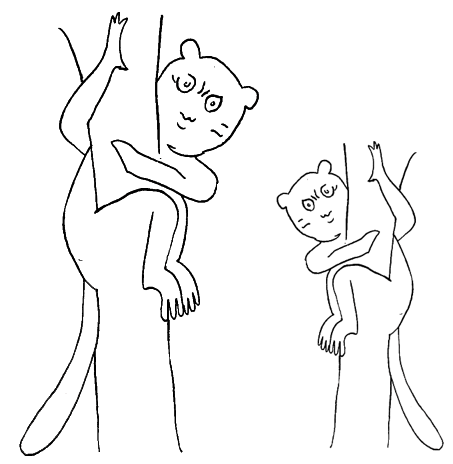ギルバート・ライル
Gilbert Ryle, 1900-1976

ギルバート・ライル
Gilbert Ryle, 1900-1976

★ギルバート・ライル(Gilbert Ryle、1900年8月19日 - 1976年10月6日)は、イギリスの哲学者であり、主にデカルトの二元論に対する批判で知られ、それに対して彼は「機械の中の幽霊」という造語を 作った。ルートヴィヒ・ウィトゲンシュタインの哲学的問題へのアプローチを共有したイギリスの普通言語哲学者の世代を代表する存在である。
| Gilbert
Ryle (19 August 1900 – 6 October 1976) was a British philosopher,[7]
principally known for his critique of Cartesian dualism, for which he
coined the phrase "ghost in the machine." He was a representative of
the generation of British ordinary language philosophers who shared
Ludwig Wittgenstein's approach to philosophical problems.[8] Some of Ryle's ideas in philosophy of mind have been called behaviourist. In his best-known book, The Concept of Mind (1949), he writes that the "general trend of this book will undoubtedly, and harmlessly, be stigmatised as 'behaviourist'."[9] Having studied the philosophers Bernard Bolzano, Franz Brentano, Alexius Meinong, Edmund Husserl, and Martin Heidegger, Ryle suggested that the book instead "could be described as a sustained essay in phenomenology, if you are at home with that label."[10] |
ギ
ルバート・ライル(Gilbert Ryle、1900年8月19日 -
1976年10月6日)は、イギリスの哲学者[7]であり、主にデカルトの二元論に対する批判で知られ、それに対して彼は「機械の中の幽霊」という造語を
作った。ルートヴィヒ・ウィトゲンシュタインの哲学的問題へのアプローチを共有したイギリスの普通言語哲学者の世代を代表する存在である[8]。 心の哲学におけるライルの考えのいくつかは行動主義者と呼ばれている。最もよく知られている『心の概念』(1949年)では、「本書の一般的な傾向は間違 いなく、そして無害に、『行動主義者』という汚名を着せられるだろう」と書いている[9]。哲学者のベルナルド・ボルツァーノ、フランツ・ブレンターノ、 アレクシウス・マインング、エドモンド・フッサール、マルチン・ハイデガーを研究してきて、ライルは代わりに本書を「もしあなたがそのラベルになじむなら ば、現象学における持続的なエッセイとして記述することができる」と提案した[10]。 |
| Gilbert Ryle was born in Brighton, England, on 19 August 1900, and grew up in an environment of learning. He was educated at Brighton College and in 1919 went up to The Queen's College at Oxford to study classics, but was soon drawn to philosophy. He graduated with a "triple first": he received first-class honours in classical Honour Moderations (1921), literae humaniores (1923), and philosophy, politics, and economics (1924). In 1924, Ryle was appointed lecturer in philosophy at Christ Church, Oxford. A year later, he became a fellow and tutor at Christ Church, where he remained until 1940.[14] In the Second World War, Ryle was commissioned in the Welsh Guards. A capable linguist, he was recruited into intelligence work and by the end of the war had been promoted to the rank of Major. After the war he returned to Oxford and was elected Waynflete Professor of Metaphysical Philosophy and Fellow of Magdalen College, Oxford. He published The Concept of Mind in 1949. He was president of the Aristotelian Society from 1945 to 1946, and editor of the philosophical journal Mind from 1947 to 1971. Ryle died on 6 October 1976 at Whitby, North Yorkshire.[14] Ryle's brothers John Alfred (1889–1950) and George Bodley (1902–1978), both educated at Brighton College, also had eminent careers. John became Regius Professor of Physic at the University of Cambridge and physician to King George V. George, after serving as Director of Forestry first for Wales and then England, was Deputy-Director of the Forestry Commission and appointed a CBE.[15] Ryle was the subject of a portrait by Rex Whistler, which he said made him look like "a drowned German General". He was a lifelong bachelor, and in retirement he lived with twin sister Mary.[16] |
ギルバート・ライルは1900年8月19日にイギリスのブライトンで生まれ、学問に囲まれた環境の中で発展していった。 ブライトン・カレッジで教育を受け、1919年にオックスフォード大学のクイーンズ・カレッジに進学して古典を学んだが、すぐに哲学に引き込まれた。古典 のHonour Moderations(1921年)、Literae Humaniores(1923年)、哲学・政治・経済学(1924年)で第一級の優等学位を得て、「トリプルファースト」で卒業した。 1924年、ライルはオックスフォードのクライストチャーチで哲学の講師に任命された。1年後、彼はクライスト・チャーチのフェロー兼チューターとなり、1940年までそこに留まった[14]。 第二次世界大戦では、ライルはウェールズ衛兵隊に入隊した。有能な言語学者であった彼は、諜報活動に従事し、戦争が終わる頃には少佐に昇進していた。戦後 はオックスフォードに戻り、形而上学哲学のウェインフリート教授とマグダレン・カレッジのフェローに選ばれた。1949年に『心の概念』を出版した。 1945年から1946年までアリストテレス協会会長、1947年から1971年まで哲学雑誌『マインド』の編集長を務めた。1976年10月6日、北 ヨークシャーのウィットビーで死去[14]。 ライルの兄弟であるジョン・アルフレッド(John Alfred, 1889-1950)とジョージ・ボドリー(George Bodley, 1902-1978)もブライトン・カレッジで教育を受け、優秀なキャリアを積んだ。ジョンはケンブリッジ大学の物理学のレジアス教授となり、ジョージ5 世の侍医となった。ジョージはウェールズとイングランドの林業局長を務めた後、林業委員会の副局長となり、CBEに任命された[15]。 ライルはレックス・ウィスラーの肖像画の被写体となり、その肖像画は自分を「溺れたドイツ軍将兵」のように見えると語っている[15]。生涯独身を貫き、引退後は双子の妹メアリーと暮らしていた[16]。 |
| The
Concept of Mind is a 1949 book by philosopher Gilbert Ryle, in which
the author argues that "mind" is "a philosophical illusion hailing
chiefly from René Descartes and sustained by logical errors and
'category mistakes' which have become habitual."[1] The work has been cited as having "put the final nail in the coffin of Cartesian dualism,"[2] and has been seen as a founding document in the philosophy of mind, which received professional recognition as a distinct and important branch of philosophy only after 1950.[3] |
『心の概念』は哲学者ギルバート・ライルが1949年に発表した著作で、著者は「心」とは「主にルネ・デカルトに由来する哲学的幻想であり、習慣化した論理的誤りと『カテゴリーの誤り』によって支えられている」[1]と論じている。 この著作は「デカルトの二元論に最後の釘を打った」[2]とされ、1950年以降に哲学の重要な一分野として専門的に認められた心の哲学の創設文書と見なされている[3]。 |
| In
the chapter "Descartes' Myth", Ryle introduces "the dogma of the Ghost
in the machine" to describe the philosophical concept of the mind as an
entity separate from the body: I hope to prove that it is entirely false, and false not in detail but in principle. It is not merely an assemblage of particular mistakes. It is one big mistake and a mistake of a special kind. It is, namely, a category mistake. |
ライルは「デカルトの神話」の章で、「機械の中の幽霊のドグマ」を紹介し、身体から分離した実体としての心という哲学的概念を説明している。 私はそれが完全に誤りであること、そして細部ではなく原理的に誤りであることを証明したいと思う。それは、単に特定の間違いの集合体ではない。それは一つの大きな間違いであり、特別な種類の間違いなのである。それはすなわち、カテゴリーの誤りである。 |
| Critique of Cartesian dualism Ryle rejects Descartes' theory of the relation between mind and body, on the grounds that it approaches the investigation of mental processes as if they could be isolated from physical processes.[4] In order to demonstrate how this theory may be misleading, he explains that knowing how to perform an act skillfully may not only be a matter of being able to reason practically but may also be a matter of being able to put practical reasoning into action. Practical actions may not necessarily be produced by highly theoretical reasoning or by complex sequences of intellectual operations. The meaning of actions may not be explained by making inferences about hidden mental processes, but it may be explained by examining the rules that govern those actions. According to Ryle, mental processes are merely intelligent acts. There are no mental processes that are distinct from intelligent acts. The operations of the mind are not merely represented by intelligent acts, they are the same as those intelligent acts. Thus, acts of learning, remembering, imagining, knowing, or willing are not merely clues to hidden mental processes or to complex sequences of intellectual operations, they are the way in which those mental processes or intellectual operations are defined. Logical propositions are not merely clues to modes of reasoning, they are those modes of reasoning. The rationalist theory that there is a transformation into physical acts of some purely mental faculty of "Will" or "Volition" is therefore a misconception because it mistakenly assumes that a mental act could be and is distinct from a physical act, or even that a mental world could be and is distinct from the physical world. This theory of the separability of mind and body is described by Ryle as "the dogma of the ghost in the machine." He explains that the workings of the mind as it governs the body are neither an independent nor a distinct mechanism, that there is no entity called "Mind" inside a mechanical apparatus called "the body", but that the workings of the mind may be better conceptualized as the actions of the body. Cartesian theory holds that mental acts determine physical acts and that volitional acts of the body must be caused by volitional acts of the mind. This theory, according to Ryle, is "the myth of the ghost in the machine." There is no contradiction between saying that an action is governed by physical laws and saying that the same action is governed by principles of reasoning. The motives of observable actions are propensities and dispositions; these explain why behaviors occur, and not some purely mental process. For example, the disposition to want or not to want something is not explained by an intellectual motive for that thing. The disposition to want something is explained by the behaviors that are involved in wanting that thing. Thus, the mind does consist of abilities and dispositions that do explain behaviors, for example the learning, remembering, knowing, feeling, or willing behaviors. However, personal abilities and dispositions are not the same as mental processes or events. To refer to abilities or dispositions as if they were purely mental occurrences is to make a basic kind of category-mistake. The nature of a person's motives may be defined by the actions and reactions of that person in various circumstances or situations. The nature of a person's motives in a particular situation may not necessarily be determined by any hidden mental processes or intellectual acts within that person. Motives may be revealed or explained by a person's behavior in a situation. Ryle criticizes the theory that the mind is a place where mental images are apprehended, perceived, or remembered. Sensations, thoughts, and feelings do not belong to a mental world which is distinct from the physical world. Knowledge, memory, imagination, and other abilities or dispositions do not reside "within" the mind as if the mind were a space in which these dispositions could be placed or located. Furthermore, dispositions are not the same as behavioral actions, but actions may be explained by dispositions. Dispositions are neither visible nor hidden, because they are not in the same logical category as behavioral actions. Dispositions are not mental processes or intellectual acts, they are propensities which explain various modes of behavior. Perceptions, thoughts, emotions, and feelings may be understood as observable behaviors which have various modes of production. Ryle admits that his approach to the theory of mind is behavioristic in being opposed to the theory that there are hidden mental processes that are distinct from observable behaviors. His approach is based on the view that actions such as thinking, remembering, feeling, and willing are revealed by modes of behavior or by dispositions to modes of behavior. At the same time, however, he criticizes both Cartesian theory and behaviorist theory for being overly mechanistic. While Cartesian theory may insist that hidden mental events produce the behavioral responses of the conscious individual, behaviorism may insist that stimulus-response mechanisms produce the behavioral responses of the conscious individual. Ryle concludes that both Cartesian theory and behaviorist theory may be too rigid and mechanistic to provide us with an adequate understanding of the concept of mind.[4] |
デカルトの二元論への批判 ライルはデカルトの心身関係論を、精神的プロセスが物理的プロセスから切り離されているかのように捉えて否定している[4]が、この論がいかに誤解を招く かを示すために、ある行為を巧みに行う方法を知ることは、単に実践的に推論できることの問題ではなく、実践的推論を行動に移すことのできる問題である可能 性があると説いている。実践的な行動は、高度に理論的な推論や、複雑な知的操作の連続によって生み出されるとは限らない。行動の意味は、隠された精神的プ ロセスについて推論することによって説明されるのではなく、その行動を支配するルールを検討することによって説明されるかもしれないのである。 ライルによれば、心的過程は単なる知的行為に過ぎない。知的行為と区別されるような精神的プロセスは存在しない。心の操作は、単に知的行為によって表現さ れるのではなく、その知的行為と同じものである。したがって、学習する、記憶する、想像する、知る、あるいは意志するという行為は、単に隠された精神的プ ロセスや複雑な知的操作の連続を示す手がかりではなく、それらの精神的プロセスや知的操作を定義する方法である。論理的命題は、単に推論の様式を示す手が かりではなく、それらの推論の様式である。 したがって、「意志」や「志」という純粋に精神的な能力の物理的行為への変換があるという合理主義者の理論は、精神的行為が物理的行為と区別され得ると か、あるいは精神世界が物理世界と区別され得るとかいう誤った前提に立っているので、誤解を招いているのである。このような心身分離説をライルは "機械の中の幽霊のドグマ "と表現している。彼は、身体を支配する心の働きは、独立した機構でもなければ、別個の機構でもない、「身体」という機械装置の中に「心」という実体は存 在しないが、心の働きは身体の作用として概念化するのがよいだろうと説明する。 デカルト理論は、精神的行為が身体的行為を決定するとし、身体の意志的行為は精神の意志的行為によって引き起こされなければならないとする。この説は、ライルによれば、"機械の中の幽霊の神話 "である。 ある行為が物理法則に支配されていると言うことと、同じ行為が推論の原理に支配されていると言うことの間には、何の矛盾もない。観察可能な行動の動機は予 感と気質であり、これらは行動がなぜ起こるかを説明するものであって、純粋に精神的なプロセスではない。例えば、何かを欲しがったり、欲しがらなかったり する気質は、その物事に対する知的な動機では説明されない。何かを欲しがるという性質は、そのものを欲しがることに関係する行動によって説明される。この ように、心は、例えば、学習、記憶、知る、感じる、あるいは意志するなどの行動を説明する能力と気質から構成されている。しかし、個人的な能力や気質は、 心のプロセスや出来事と同じではありません。能力や気質を、あたかもそれらが純粋に精神的な出来事であるかのように言うのは、基本的な種類のカテゴリーミ スを犯していることになる。 ある人の動機の性質は、様々な状況や場面におけるその人の行動や反応によって定義されるかもしれない。ある特定の状況における人の動機の性質は、必ずしも その人の中の隠された精神的なプロセスや知的な行為によって決定されるとは限りません。動機は、ある状況におけるその人の行動によって明らかにされたり、 説明されたりすることがある。 ライルは、心とは心的イメージを理解し、知覚し、記憶する場所であるとする説を批判している。感覚、思考、感情は物理的世界とは異なる精神世界に属してい ない。知識、記憶、想像力、その他の能力や気質は、あたかも心がこれらの気質を配置できる空間であるかのように、心の「中」に存在するわけではない。さら に、気質は行動と同じではないが、行動は気質によって説明されることがある。 ディスポジションは行動行為と同じ論理的範疇にないため、見えることも見えないこともない。ディスポジションは精神的プロセスや知的行為ではなく、様々な 行動様式を説明する性向である。知覚、思考、感情、感覚は、様々な生産様式を持つ観察可能な行動として理解することができる。 ライルは、心の理論に対する自分のアプローチが、観察可能な行動とは異なる隠れた心のプロセスが存在するという理論に反対する行動主義的なものであること を認めている。このように、ライルのアプローチは、思考、記憶、感情、意志といった行動は、行動様式、あるいは行動様式に対する気質によって明らかにされ るという見解に基づいている。しかし、同時に彼は、デカルト理論と行動主義理論の両方が過度に機械的であると批判している。デカルト理論が、隠された心的 事象が意識的な個人の行動反応を生み出すと主張するのに対し、行動主義は、刺激-反応メカニズムが意識的な個人の行動反応を生み出すと主張するのである。 ライルは、デカルト理論も行動主義理論も、心の概念を適切に理解するには、あまりに硬直的で機械的であると結論付けている。 |
| Category mistakes As a linguistic philosopher, a significant portion of Ryle's argument is devoted to analyzing what he perceives as philosophical errors based in conceptual use of language.[2] His critique of Cartesian dualism refers to it as a category mistake.[5] Category mistakes, such as the ones Ryle points out, are made by people who do not know how to properly wield the concepts with which they are working. Their puzzles arise from the inability to use certain items in human language. A much-cited example is of a foreign visitor being shown round Oxford (which has no campus) and after having been shown colleges, libraries, laboratories and playing fields asks in puzzlement "But where is the university?" The answer is, of course, all of these. The theoretically interesting category mistakes are those made by people who are perfectly competent to apply concepts, at least in the situations with which they are familiar, but are still liable in their abstract thinking to relocate those concepts to logical types to which they do not belong.[4][6] The dualist doctrine establishes a polar opposition between mind and body. At the language level, the mental properties are logical negations (in the Aristotelian sense) of the physical properties. So they belong, in accordance with the concept of category, to the same logical types, given that the expressions that are used for the descriptions of mental events are always mere negatives of the expressions used for the descriptions of material events. Ryle then says that such use implies a 'categorical mistake' for the descriptions of mental events that do not properly belong to the categories used for describing the corporeal events. Hence, 'mind' and 'matter' cannot be the polar opposites that Dualism suggests. Ryle writes that this would be comparable to claiming that "She came home in floods of tears" and "She came home in a sedan chair" (from the sentence "Miss Bolo came home in a flood of tears and a sedan chair," a zeugmatic sentence from Dickens) to be polar opposites. Such mistakes are, from the Rylean standpoint, the dogma of the mental ghost in the corporeal machine. Then, dualist doctrines are mythic in an analytical sense.[7] |
カテゴリー・ミステイク 言語哲学者であるライルの議論の大部分は、言語の概念的使用に基づく哲学的誤りとして彼が認識しているものを分析することに費やされている[2] 。 ライルが指摘するようなカテゴリーの誤りは、彼らが働いている概念を適切に使う方法を知らない人々によって作られる[5]。ライルが指摘するようなカテゴ リー・ミスは、自分が扱っている概念の適切な使い方を知らない人が犯すもので、人間の言語におけるある種の項目を使えないことから、そのパズルは発生す る。よく言われるのは、オックスフォード(キャンパスはない)を案内された外国人旅行者が、カレッジ、図書館、研究室、競技場などを見せられた後、"でも 大学はどこですか?"と困惑して尋ねるという例である。もちろん、答えはこれらすべてである。 理論的に興味深いカテゴリの間違いは、少なくとも自分が慣れ親しんでいる状況においては、概念を適用する能力が完全にあるにもかかわらず、抽象的な思考において、それらの概念を属していない論理型に再配置する傾向がある人々によって引き起こされるものである[4][6]。 二元論では、精神と肉体の間に両極の対立が成立する。言語レベルでは、心的性質は、物理的性質の(アリストテレス的な意味での)論理的否定である。つま り、精神的事象の記述に使われる表現は、常に物質的事象の記述に使われる表現の単なる否定であることから、カテゴリーの概念に従って、それらは同じ論理タ イプに属することになる。そしてライルは、このような使い方は、身体的事象の記述に使われるカテゴリーに正しく属さない精神的事象の記述に対する「カテゴ リー的誤り」を意味する、と言うのである。したがって、「心」と「物質」は二元論が示唆するような正反対のものではありえない。これは、「彼女は涙の洪水 で帰ってきた」と「彼女はセダン椅子で帰ってきた」(ディケンズのzeugmaticな文章「ミス・ボロは涙の洪水とセダン椅子で帰ってきた」から)を両 極であると主張することに匹敵するとライルは書いている。このような間違いは、ライルの立場からすれば、身体的機械の中の精神的亡霊のドグマである。それ から、二元論的な教義は、分析的な意味で神話的である。 |
| Antecedents Ryle builds on the work of philosophers Ludwig Wittgenstein and Arthur Schopenhauer, among others.[2][7] According to Bryan Magee, the central thesis of Concept of Mind and the essentials of its subsidiary theses were derived from Schopenhauer, whose works Ryle had read as a student, then largely forgotten. Ryle, who believed that he had expounded an original theory, did not realize what he had done until someone pointed it out to him after the book was published.[8] |
前身となるもの ブライアン・マギーによれば、『心の概念』の中心的な論題とその副次的な論題の要点は、ライルが学生時代に読み、その後ほとんど忘れられていたショーペン ハウアーに由来している[2][7]。ライルは自分が独自の理論を展開したと信じていたが、本が出版された後、誰かに指摘されるまで、自分が何をしたのか 気付かなかった[8]。 |
| Ryle
has been characterized as an "ordinary language" philosopher,[2] for
which the book's style of writing has attracted comment. Stuart Hampshire remarked in a review in Mind that:[9] There is only one property which I can discover to be common to Professor Ryle and Immanuel Kant; in both cases the style is the philosopher - as Kant thought and wrote in dichotomies, Professor Ryle writes in epigrams. There are many passages in which the argument simply consists of a succession of epigrams, which do indeed effectively explode on impact, shattering conventional trains of thought, but which, like most epigrams, leave behind among the debris in the reader's mind a trail of timid doubts and qualifications. John Searle, who has often said that no great work of philosophy contains many footnotes and that philosophical quality varies inversely with the number of bibliographical references, considers the absence of footnotes in The Concept of Mind as a sign of its quality.[10] Iris Murdoch has compared The Concept of Mind to Jean-Paul Sartre's Being and Nothingness (1943), with the view that English analytic philosophy shares the same general orientation as continental philosophy.[11] Ryle has been interpreted by David Stannard as maintaining that the psychoanalytic idea of the unconscious is rooted in the Cartesian conception of a body-mind dichotomy and as such is one version of the "Ghost in the Machine" fallacy. According to Stannard, Ryle views the dogma as a logical error based on a category mistake.[12] Richard Webster praises Ryle's clarity and strength of argument, but suggests that while his arguments effectively dissolve the mind-body problem, they have failed to bring about a revolution in human knowledge. Webster attributes this to the fact that Ryle's case that subjective aspects of experience such as sensation, memory, consciousness and sense of self are not the essence of "mind" has not been universally accepted by contemporary philosophers, neuroscientists, and psychologists. Webster believes that Ryle's willingness to accept the characterization of The Concept of Mind as behaviorist misrepresents its more nuanced position, writing that Ryle's acceptance of that description is not harmless, as Ryle himself suggested. Webster stresses that Ryle does not deny the reality of what are often called internal sensations and thoughts, but simply rejects the idea that they belong to a realm logically distinct from and independent of the external realm of ordinary human behaviour.[1] The book's style of writing was commented on more negatively by Herbert Marcuse, who observes that the way in which Ryle follows his presentation of "Descartes' Myth" as the "official doctrine" about the relation between body and mind with a preliminary demonstration of its "absurdity" which evokes "John Doe, Richard Roe, and what they think about the 'Average Taxpayer'" shows a style that moves "between the two poles of pontificating authority and easy-going chumminess," something Marcuse finds to be characteristic of philosophical behaviorism.[13] |
ライルは「普通の言葉」の哲学者として特徴づけられており[2]、そのため本書の文体はコメントを集めている。 スチュアート・ハンプシャーは『マインド』誌の書評で次のように発言している[9]。 カントが二項対立で考え、書いたように、ライル教授はエピグラムで書くのである。このようなエピグラムは、確かに衝撃を与えると効果的に爆発し、従来の思 考回路を粉砕するが、多くのエピグラムと同様に、読者の心の中の瓦礫の中に、臆病な疑問や修飾の跡を残していくのである。 ジョン・サールは哲学の偉大な著作には多くの脚注が含まれておらず、哲学的な質は文献の数に反比例して変化するとよく言っているが、『心の概念』に脚注がないことはその質の表れであるとみなしている[10]。 アイリス・マードックは『心の概念』をジャン=ポール・サルトルの『存在と無』(1943年)と比較し、イギリスの分析哲学は大陸哲学と同じ一般的な方向 性を共有しているという見解を持っている[11] ライルはデヴィッド・スタナードによって、精神分析における無意識という考えは身体と精神の二分法というデカルトの概念に基づいていて、それゆえに「機械 の中の幽霊」という誤謬の1バージョンであると主張していると解釈されることがあった。スタナードによれば、ライルはこのドグマをカテゴリの間違いに基づ く論理的な誤りとして捉えている[12]。 リチャード・ウェブスターはライルの明晰さと議論の強さを賞賛しているが、彼の議論は心身の問題を効果的に解消する一方で、人間の知識に革命をもたらすこ とはできなかったと指摘している。これは、感覚、記憶、意識、自己意識といった経験の主観的側面は「心」の本質ではないというライルの主張が、現代の哲学 者、神経科学者、心理学者に普遍的に受け入れられていないことに起因しているとウェブスターは指摘する。Websterは、Ryleが『心の概念』を行動 主義的と評することを進んで受け入れることは、よりニュアンスの異なる立場を誤って伝えていると考え、Ryle自身が示唆したように、Ryleがその記述 を受け入れることは無害ではない、と書いている。ウェブスターは、ライルはしばしば内的感覚や思考と呼ばれるものの実在を否定しているのではなく、それら が通常の人間の行動という外的領域とは論理的に異なる、独立した領域に属するという考えを否定しているだけだと強調する[1]。 この本の文体について、ハーバート・マルクーゼはより否定的なコメントを残している。彼は、ライルが身体と心の関係についての「公式教義」として「デカル トの神話」を提示した後に、その「不条理さ」を予備的に証明するやり方は、「ジョン・ドウ」(John Doe)を想起させると観察している。ライルは、「ジョン・ドウ、リチャード・ロー、そして彼らが『平均的納税者』について考えていること」を想起させる 「不条理」の予備的実証を行うことで、「高説的権威と気楽なお喋りという二つの極の間を行き来する」スタイルを示し、マルキューが哲学的行動主義の特徴で あるとするものである[13]。 [13] |
| Hard problem of consciousness Logical behaviorism Mens sana in corpore sano Qualia |
|
| Knowing-how and knowing-that A distinction deployed in The Concept of Mind, between 'knowing-how' and 'knowing-that', has attracted independent interest. This distinction is also the origin of procedural (knowing-how) and declarative (knowing-that) models of long-term memory.[18] This distinction is widely accepted in philosophy.[18] Philosophers have not done justice to the distinction which is quite familiar to all of us between knowing that something is the case and knowing how to do things. In their theories of knowledge they concentrate on the discovery of truths or facts, and they either ignore the discovery of ways and methods of doing things or else they try to reduce it to the discovery of facts. They assume that intelligence equates with the contemplation of propositions and is exhausted in this contemplation. — Gilbert Ryle, Aristotelian Society Presidential Address, 1945. An example of the distinction can be knowing how to tie a reef knot and knowing that Queen Victoria died in 1901. |
「どのようなことを知ること」と「どのことを知ること」 『心の概念』で展開された「どのようなことを知ること(know-how)」と「どのことを知ること(know-that)」の間の区別は、独立した関心 を集めている。この区別は長期記憶の手続き型(ノウハウ)と宣言型(知っていること)のモデルの起源でもある[18]。この区別は哲学において広く受け入 れられている[18]。 哲学者たちは、何かがそうであることを知っていることと、物事を行う方法を知っていることの間の、私たち全員にとって非常に馴染み深い区別を正当に評価し ていない。彼らの知識理論においては、真理や事実の発見に集中し、物事を行う方法やメソッドの発見を無視するか、さもなければ事実の発見に還元しようとす るのである。彼らは、知性は命題の観照と等しく、この観照のうちに尽きると仮定する。 - ギルバート・ライル、アリストテレス協会会長講演、1945年。 例えば、リーフの結び方を知っていることと、ヴィクトリア女王が1901年に亡くなったことを知っていることは、区別されるのである。 |
| Philosophy as cartography The philosophical arguments which constitute this book are intended not to increase what we know about minds but to rectify the logical geography of the knowledge we already possess.[19] Ryle thought it no longer possible to believe that a philosopher's task is to study mental as opposed to physical objects. In its place, Ryle saw a tendency of philosophers to search for objects whose nature was neither physical nor mental. Ryle believed, instead, that "philosophical problems are problems of a certain sort; they are not problems of an ordinary sort about special entities."[14] Ryle analogizes philosophy to cartography. Competent speakers of a language, Ryle believes, are to a philosopher what ordinary villagers are to a mapmaker: the ordinary villager has a competent grasp of his village, and is familiar with its inhabitants and geography. But when asked to interpret a map of that knowledge, the villager will have difficulty until he is able to translate his practical knowledge into universal cartographic terms. The villager thinks of the village in personal and practical terms, while the mapmaker thinks of the village in neutral, public, cartographic terms.[20]: 440–2 By "mapping" the words and phrases of a particular statement, philosophers are able to generate what Ryle calls implication threads: each word or phrase of a statement contributes to the statement in that, if the words or phrases were changed, the statement would have a different implication. The philosopher must show the directions and limits of different implication threads that a "concept contributes to the statements in which it occurs." To show this, he must be "tugging" at neighbouring threads, which, in turn, must also be "tugging." Philosophy, then, searches for the meaning of these implication threads in the statements in which they are used.[20]: 444–5 |
地図作成としての哲学 本書を構成する哲学的議論は、心について我々が知っていることを増やすためではなく、我々が既に持っている知識の論理的地理を修正することを意図している[19]。 ライルは、哲学者の仕事が物理的対象とは対照的に精神を研究することであると信じることはもはや不可能であると考えていた。その代わりにライルは、哲学者 が物理的でもなく精神的でもない性質を持つ対象を探索する傾向があると考えた。その代わりにライルは「哲学的な問題はある種の問題であり、特別な実体に関 する普通の問題ではない」と考えていた[14]。 ライルは哲学を地図製作になぞらえています。ある言語の有能な話者は、哲学者にとっての普通の村人であり、地図製作者にとっての普通の村人は、自分の村に ついて有能に把握し、その住民と地理に精通しているとライルは考えている。しかし、その知識を地図に反映させることを求められたとき、村人は自分の実践的 な知識を普遍的な地図用語に置き換えることができるようになるまで、困難な状況に陥るだろう。村人は個人的で実用的な用語で村を考え、地図屋は中立的で公 共的な地図用語で村を考えているのである[20]。 440-2 哲学者は、特定の文の語句を「マッピング」することによって、ライルが含意スレッドと呼ぶものを生成することができる。すなわち、文の各語句は、その語句 が変更されれば文は異なる含意を持つであろうという点で文に寄与する。哲学者は、「概念が、それが出現する文に寄与する」さまざまな含意の糸の方向と限界 を示さなければならない。このことを示すには、隣接する糸を「引っ張る」必要があり、その糸もまた「引っ張る」必要がある。そして哲学は、これらの含意糸 が使われる文の中に、その意味を探っていくのである[20]。 444-5 |
| Thick description In 1949 Ryle first introduced the notion of thick description in "The Thinking of Thoughts: What is 'Le Penseur' Doing?"[21][22] and "Thinking and Reflecting". According to Ryle, there are two types of descriptions:[21] thin description: surface-level observations of behaviour, e.g. 'His right hand rose to his forehead, palm out, when he was in the vicinity of and facing a certain other human.' thick description: adds context to such behaviour. Explaining this context necessitates an understanding of the motivations people have for their behaviours, as well as how observers in the community understand such behaviour: 'He saluted the General.' |
厚い記述 1949年、ライルは「思考の思考」において厚い記述という概念を初めて導入した。1949年、ライルは「思考の思考:『ル・パンセール』は何をしている のか」[21][22]と「思考と反省」の中で厚い記述の概念を初めて紹介した。ライルによれば、記述には次の2種類がある[21]。 薄い記述:表面レベルの行動観察、例えば「ある他の人間の近くにいて、その人間と向き合っているとき、彼の右手は手のひらを出して、彼の額に上がっていた」。 厚い記述:そのような行動に文脈を追加する。この文脈を説明するには、人々がその行動に抱く動機と、コミュニティの観察者がそのような行動をどのように理解しているかを理解する必要がある:「彼は将軍に敬礼した」。 |
| Legacy Ryle's notion of thick description[21] has been an important influence on cultural anthropologists such as Clifford Geertz.[23][24] The Concept of Mind was recognised on its appearance as an important contribution to philosophical psychology, and an important work in the ordinary language philosophy movement. But in the 1960s and 1970s, the rising influence of the cognitivist theories of Noam Chomsky, Herbert A. Simon, Jerry Fodor, and others in the neo-Cartesian school became predominant. The two major postwar schools in the philosophy of mind, Fodor's representationalism and Wilfrid Sellars's functionalism, posited precisely the 'internal' cognitive states that Ryle had argued against. Philosopher Daniel Dennett, a student of Ryle's, has said that recent trends in psychology such as embodied cognition, discursive psychology, situated cognition, and others in the post-cognitivist tradition, have provoked a renewed interest in Ryle's work. Dennett provided a sympathetic foreword to the 2000 edition of The Concept of Mind.[25] Author Richard Webster endorsed Ryle's arguments against mentalist philosophies, suggesting in Why Freud Was Wrong (1995) that they implied that "theories of human nature which repudiate the evidence of behaviour and refer solely or primarily to invisible mental events will never in themselves be able to unlock the most significant mysteries of human nature."[26] |
レガシー ライルの厚い記述の概念[21]は、クリフォード・ギアツなどの文化人類学者に重要な影響を与えた[23][24]。 『心の概念』は登場時に哲学的心理学への重要な貢献であり、普通言語哲学運動における重要な著作として認識されていた。しかし、1960年代から1970 年代にかけて、ノーム・チョムスキー、ハーバート・A・サイモン、ジェリー・フォドーら新カルテジアン学派の認知主義理論の影響力が高まり、優勢となっ た。戦後の心の哲学の二大潮流であるフォーダーの表象主義とウィルフリッド・セラーズの機能主義は、まさにライルが反対した「内的」認知状態を想定してい たのである。ライルの教え子である哲学者ダニエル・デネットは、最近の心理学の動向として、身体化認知、談話心理、状況認知などのポスト認知主義の伝統が ライルの仕事への新たな関心を呼び起こしたと述べている。デネットは2000年版の『心の概念』に対して共感的な序文を寄せている[25]。 作家のリチャード・ウェブスターはメンタリストの哲学に対するライルの議論を支持し、それらが「行動の証拠を否定し、目に見えない精神的事象にのみまたは 主に言及する人間性の理論はそれ自体で人間性の最も重要な謎を解くことができない」ことを暗示していると『Why Freud Was Wrong』(1995)で提案している[26]。 |
| Books 1949. The Concept of Mind 1954. Dilemmas: The Tarner Lectures 1953, a collection of shorter pieces 1966. Plato's Progress 1971. Collected Essays 1929 - 1968, in two volumes, 57 essays 1977. Contemporary Aspects of Philosophy, editor 1979. On Thinking[27] |
ライルの著作 1949. 心の概念 1954. ジレンマ:ターナー講演の短い記録、1953年 1966. プラトンの進歩 1971. エッセイ集 1929年~1968年 全2巻57編 1977. 哲学の現代的側面』編集部 1979. 思考について[27] |
| https://en.wikipedia.org/wiki/Gilbert_Ryle https://en.wikipedia.org/wiki/The_Concept_of_Mind |
https://www.deepl.com/ja/translator |
+++
Links
リンク
文献
その他の情報


